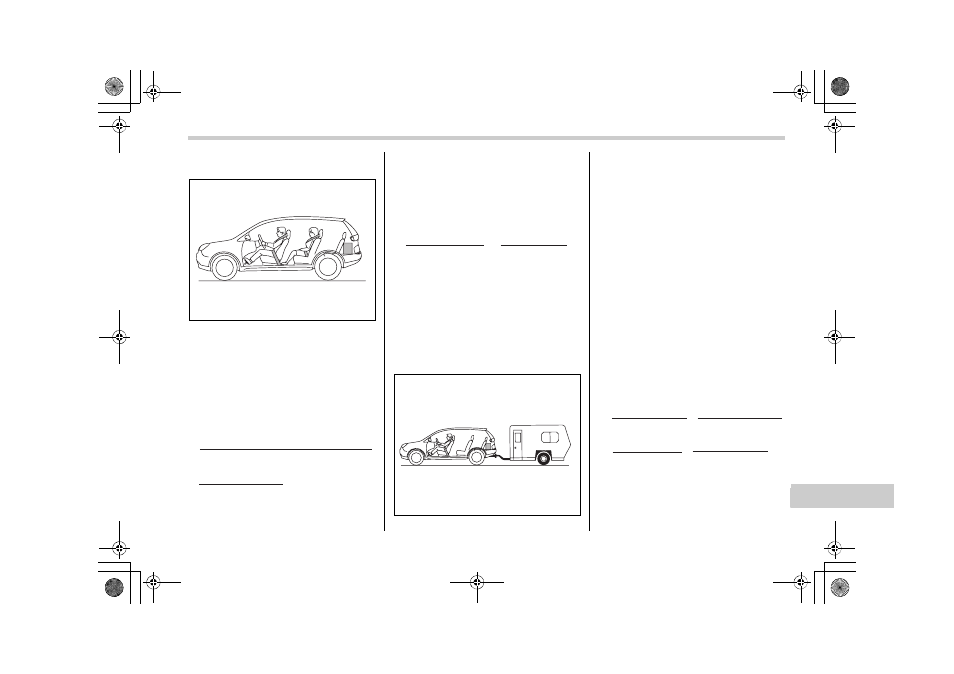Subaru 2007 Tribeca User Manual
Page 386

Consumer information and Reporting safety defects
13-9
13
– CONTINUED –
Example 1B
For example, if a person weighing 176
lbs (80 kg) now enters the same vehi-
cle (bringing the number of occupants
to two), the calculations are as fol-
lows:
1. Calculate the total weight.
2. Calculate the available load capac-
ity.
3. The total weight now exceeds the
capacity weight by 55 lbs (25 kg), so
the cargo weight must be reduced by
55 lbs (25 kg) or more.
Example 2A
Vehicle capacity weight of the vehicle
is 1,157 lbs (525 kg), which is indicat-
ed on the vehicle placard with the
statement “The combined weight of
occupants and cargo should never
exceed 525 kg or 1,157 lbs”.
For example, the vehicle has one oc-
cupant weighing 165 lbs (75 kg) plus
cargo weighing 705 lbs (320 kg). In
addition, the vehicle is fitted with a
trailer hitch weighing 22 lbs (10 kg), to
which is attached a trailer weighing
1,764 lbs (800 kg). 10% of the trailer
weight is applied to the trailer tongue
(i.e. Tongue load = 176 lbs (80 kg)).
1. Calculate the total weight.
2. Calculate the available load capac-
ity.
D00102
Total weight
= 154 lbs (70 kg) + 176 lbs (80 kg)
+ 882 lbs (400 kg)
= 1,212 lbs (550 kg)
(Occupant)
(Cargo)
Available Load Capacity
(Vehicle
capacity weight)
(Total weight)
1,157 lbs
(525 kg)
1,212 lbs
(550 kg)
= –55 lbs (–25 kg)
–
=
D00103
Total weight
= 165 lbs (75 kg) + 705 lbs (320 kg)
+ 22 lbs (10 kg) + 176 lbs (80 kg)
= 1,069 lbs (485 kg)
(Occupant)
(Cargo)
(Trailer hitch)
(Tongue load)
A3120BE-B.book 9 ページ 2006年5月30日 火曜日 午前9時32分